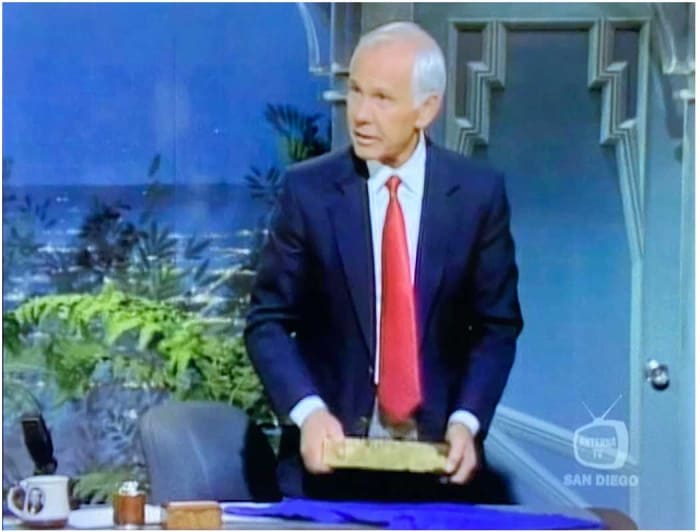#Nicknamed #Carson #Bar #Enormous #Gold #Ingot #Sells #Million
Late-night television host Johnny Carson briefly lifted the 62-pound ingot on his May 10, 1991, show. The ingot subsequently was nicknamed “The Carson Bar.”
LOS ANGELES – A collector of California Gold Rush artifacts recently paid more than $2 million for a 62-pound gold bar recovered from the 1857 sinking of the fabled “Ship of Gold,” the S.S. Central America.
The nearly foot-long ingot earned the “Carson Bar” nickname after late-night television host Johnny Carson carefully hoisted the massive gold bar during a 1991 segment of “The Tonight Show Starring Johnny Carson,” according to Rare Collectibles TV of Los Angeles, who arranged the sale through their Private Advisory Coin Team concierge service.
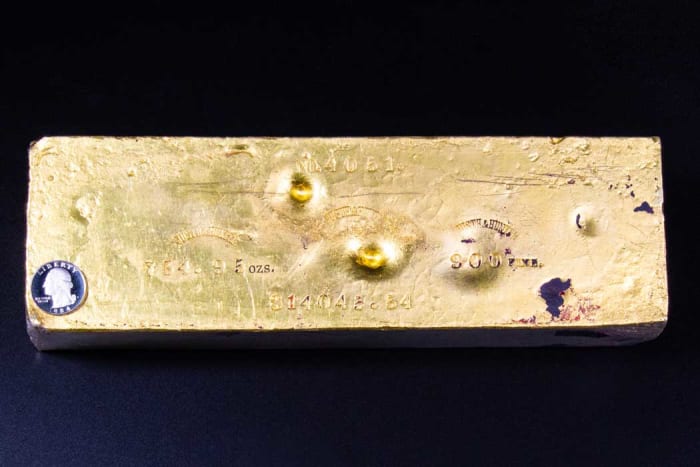
With a quarter on it for size comparison, this large gold ingot recovered from the S.S. Central America has been sold for more than $2 million.
“The anonymous buyer is a collector who specializes in historically significant, rare United States coins with an emphasis on the California Gold Rush,” explained Jack McNamara, co-founder of Rare Collectibles TV.
“This enormous gold ingot is eleven inches long, three and a half inches wide, and a little over two inches high and is one the largest surviving gold bars of the Old West,” McNamara said. “It’s a national treasure that is one of America’s most important artifacts of the California Gold Rush.”
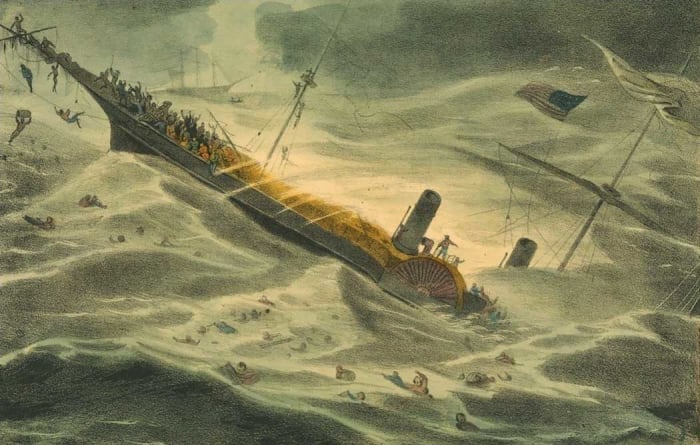
The S.S. Central America, known as the ‘Ship of Gold,’ sank September 12, 1857, while caught in a hurricane.
Public Domain Image
Discovered in 1988 on the seabed about 7,200 feet below the surface of the Atlantic Ocean off the coast of South Carolina, the ingot was made during the California Gold Rush by prominent San Francisco assayers Justh & Hunter. It weighs 754.95 troy ounces (a little over 62 troy pounds) and was valued at the time of its creation a century-and-a-half ago at $14,045.54.
The S.S. Central America was given the nickname “Ship of Gold” for her famous cargo: tons of gold from the San Francisco mint and various other gold coins, ingots, gold dust, and bullion from the California Gold Rush. Heading to New York City, the ship sunk during a raging hurricane about 160 miles offshore of Charleston, South Carolina, September 12, 1857. The tragedy has been described as the greatest economic catastrophe in U.S. maritime history, contributing to the Panic of 1857 and leading to a severe recession.
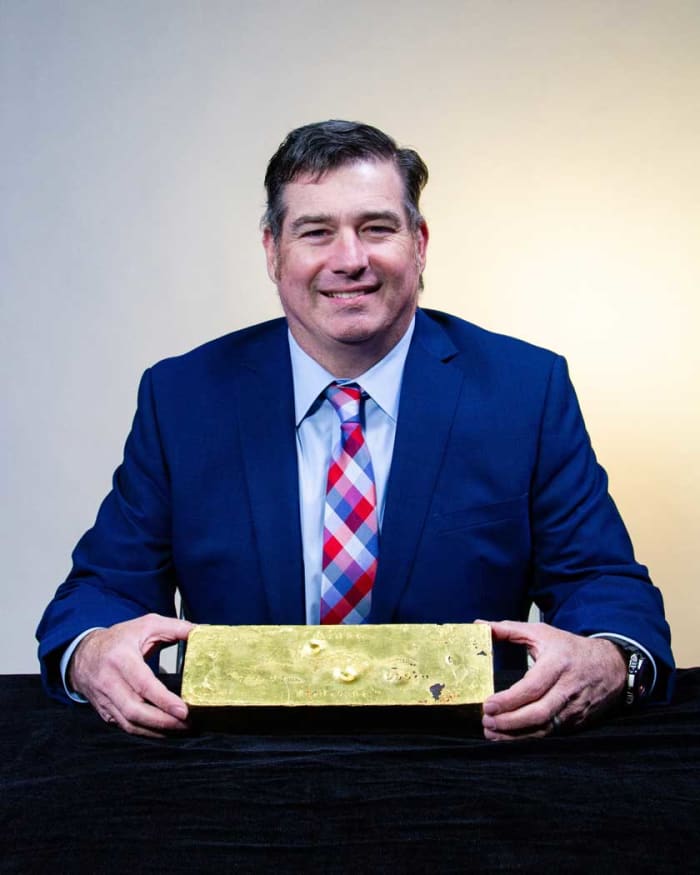
Jack McNamara, co-founder of Rare Collectibles TV, with the ‘Carson Bar.’
Courtesy Rare Collectibles TV
Thousands of coins struck predominately by the San Francisco Mint went down with the ship, along with 425 passengers and crew, including the ship’s captain, William Herndon. While 30,000 pounds of gold was aboard the Central America in the form of ingots, coinage, and dust, only a small portion of the gold was large bars. This massive 754.95 troy ounce gold ingot is one of the largest to be found on the ship and the third largest California Gold Rush era ingot known to still exist.
On May 10, 1991, Bob Evans, the chief scientist on the Central America discovery and recovery missions, took the gold bar to an on-air interview segment with Johnny Carson. The late-night TV host was impressed by the sunken treasure and briefly lifted it.
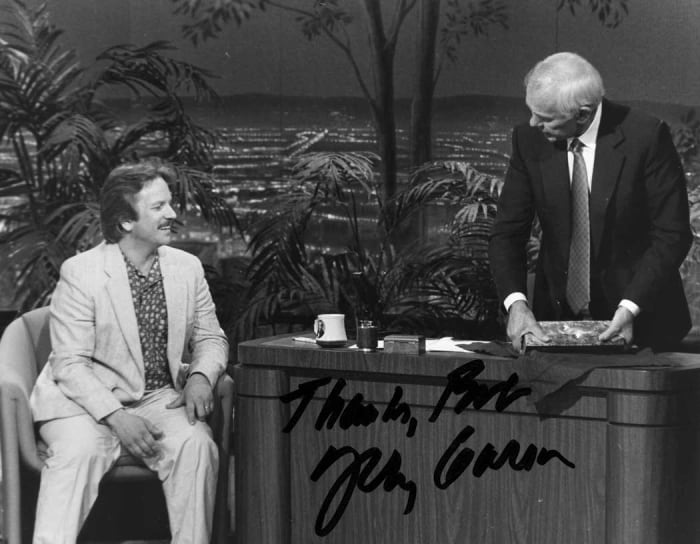
This autographed photo shows scientist Bob Evans watching TV host Johnny Carson lift the 62-pound California Gold Rush ingot from the S.S. Central America on May 10, 1991.
Courtesy of Bob Evans
“Because the ingot weighed over 50 pounds, two NBC-TV stagehands had to carry it onto the set, but during the unrehearsed segment on the air, Carson grabbed it by himself with both hands,” Evans recalled. “As he held the big piece of yellow metal, I watched as concern crossed Johnny’s face. Gold, mind you, is around 50% heavier than lead, which is usually regarded as something very heavy. Seated only five or six feet away, I saw Johnny’s body grow tense, and the veins bulge in his neck. This became a brief competition between man and mass.”
The Carson Bar moniker was born that day and remains more than three decades later.
You May Also Like:
Blimey! British Couple Discover Treasure Under Kitchen Floor

